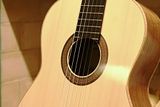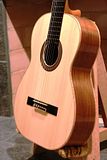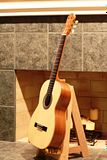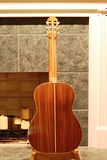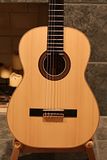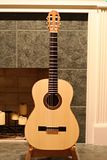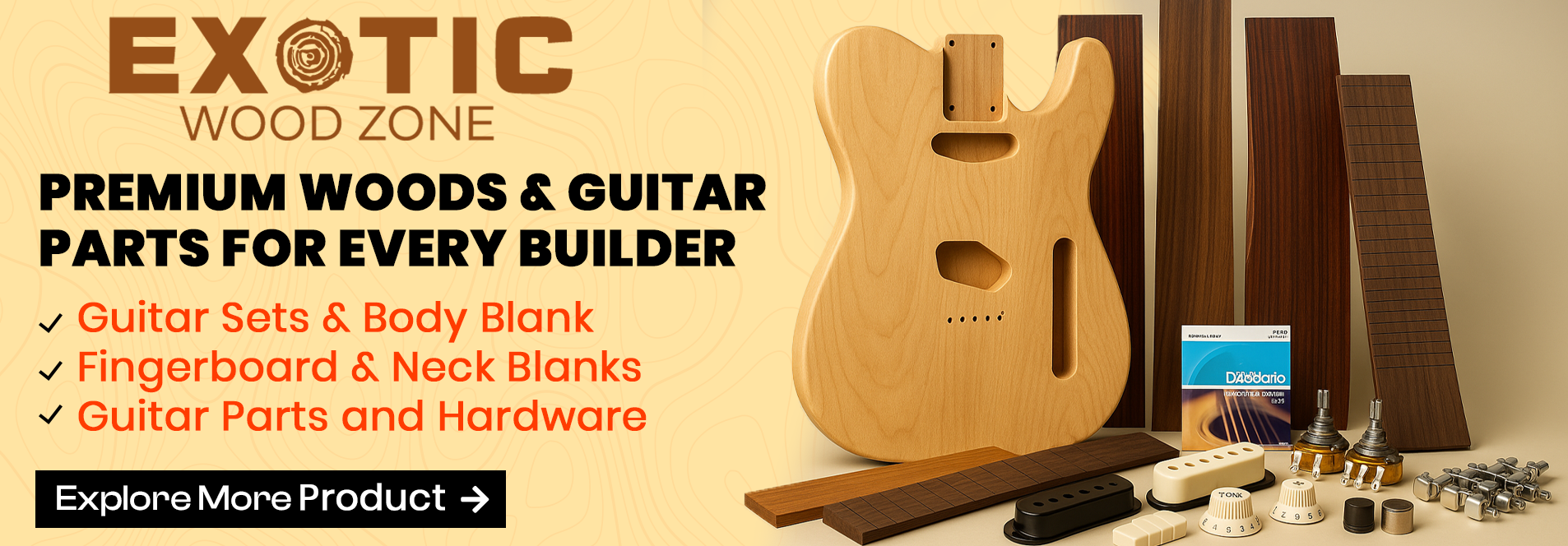- Black Walnut S&B (KMG)
- Fine grained Englemann Spruce Top (KMG)
- Five piece neck - African Mahogany, Black Walnut, & Maple (DaveH)
- Curly Maple Binding & Back Seam, BWB Purfling F&B
- Finish on Sides, Back, & Neck: Behlen's instrument Lacquer
- Finish on Top: Behlens Qualasole (Padding/FP Finish)
I made the bending mold and construction mold based upon the 1937 Hauser Design. Because I chose to use a bolt in neck I opted for non-radiused Neck and Tail Blocks. Accordingly, both the top and bottom have a slightly different profile when compared to the original design. Ken @ KMG has the bending mold and templates so he can readily provide bent sides or a kit.
Building a Classical vs a Steel String was an interesting project. While there are many similarities, there are many differences. Ken (KMG) let me borrow his Sloane and Overholtzer books, which were both very informative. Attempting to be true to form I also choose to apply a "padded" finish to the top. This proved to be much more challenging and does'nt look near as good as my usual lacquer finish. I'll have to let someone with "trained ears" tell me if the sound quality is indeed more impressive when compared to a top finished with many coats of film-type finishes.
Thanks again to Ken @ KMG for the nice tonewoods and advice.
